
Roots
The very strands that crown our heads, particularly those with a texture that coils and springs, carry stories as old as time. These are not merely biological filaments; they represent a living archive, echoing the profound cultural heritage of Black and mixed-race peoples across continents and centuries. Yet, these very symbols of identity and ancestral wisdom often face formidable challenges within the structured confines of professional and academic settings. It is a dissonance, a quiet tension between the organic unfolding of heritage and the rigid expectations of institutional spaces.
Consider the deep significance of hair in pre-colonial African societies. Hair served as a rich visual language, communicating a person’s age, marital status, tribal affiliation, social standing, and even spiritual beliefs. The act of tending to hair was a communal ritual, a moment of connection and intergenerational teaching. Styles like Cornrows, far from being a modern trend, possess a history stretching back thousands of years, carrying stories of resilience and artistry.
This intimate relationship with hair was abruptly disrupted by the transatlantic slave trade, where the deliberate shaving of heads upon arrival in the Americas aimed to strip enslaved Africans of their identity and cultural ties. In this brutal act, the very foundation of hair as a marker of heritage was attacked, replaced by a narrative that deemed textured hair “unprofessional,” “unruly,” or “unclean” – a narrative that sadly persists in many spaces today.
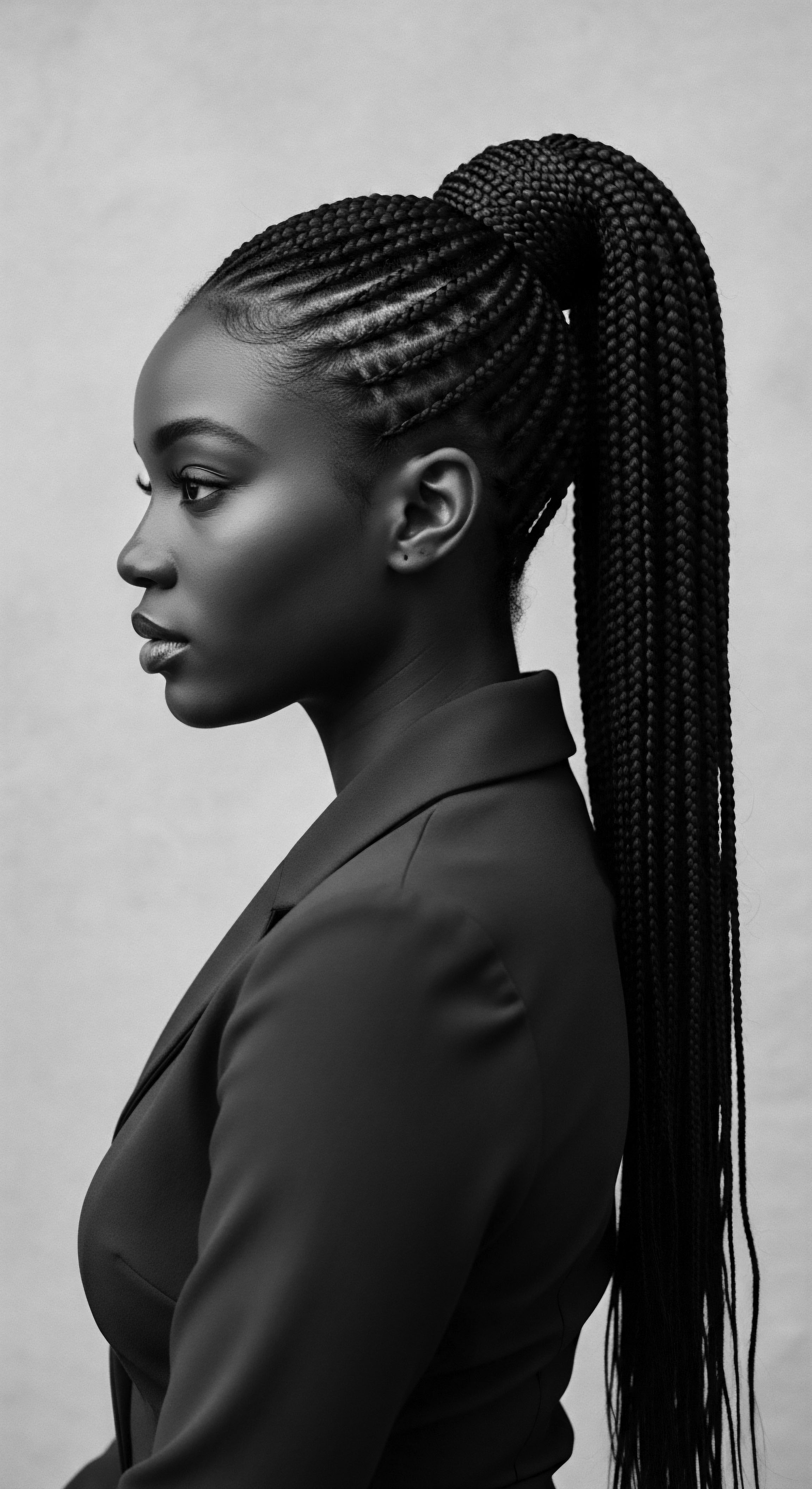
What Challenges Arise from Historical Narratives of Hair?
The legacy of this historical devaluation casts a long shadow over present-day experiences. Textured hair, in its natural state, became associated with notions of inferiority during the era of slavery, a direct contrast to the “straight, long, and smooth” characteristics glorified by Eurocentric beauty standards. This harmful association seeped into societal norms, influencing perceptions of professionalism and acceptability.
Consequently, individuals with textured hair have often faced pressure to chemically alter their hair, a practice that not only carries financial and health burdens but also serves as a subtle erasure of a fundamental aspect of their heritage. The notion that one’s hair must conform to a singular, imposed aesthetic rather than celebrate its inherent texture places a significant, often invisible, tax on those who wear their hair as it naturally grows.
The historical devaluation of textured hair, stemming from the era of enslavement, continues to shape modern perceptions of professionalism, creating invisible barriers for those who wear their hair in its natural state.
The echoes of these historical biases are not confined to subjective judgments. They have, in fact, manifested in explicit policies and disciplinary actions within professional and academic environments. A stark example of this historical thread extending into recent times is seen in cases that necessitated the CROWN Act . Prior to such legislation, individuals were routinely denied opportunities or disciplined due to hairstyles intrinsically linked to their racial identity.
For instance, in 2013, the Equal Employment Opportunity Commission filed a lawsuit on behalf of Chastity Jones, an African American job applicant whose offer was rescinded because she refused to cut her locs, a style deemed to violate the company’s grooming policy. While the courts initially sided with the employer, this case, and many others, highlighted a systemic issue ❉ policies presented as “race-neutral” often disproportionately affected Black people, perpetuating racial discrimination. These discriminatory practices force a choice ❉ conform to an imposed standard or risk educational and career advancement, severing a connection to self and ancestral practices.
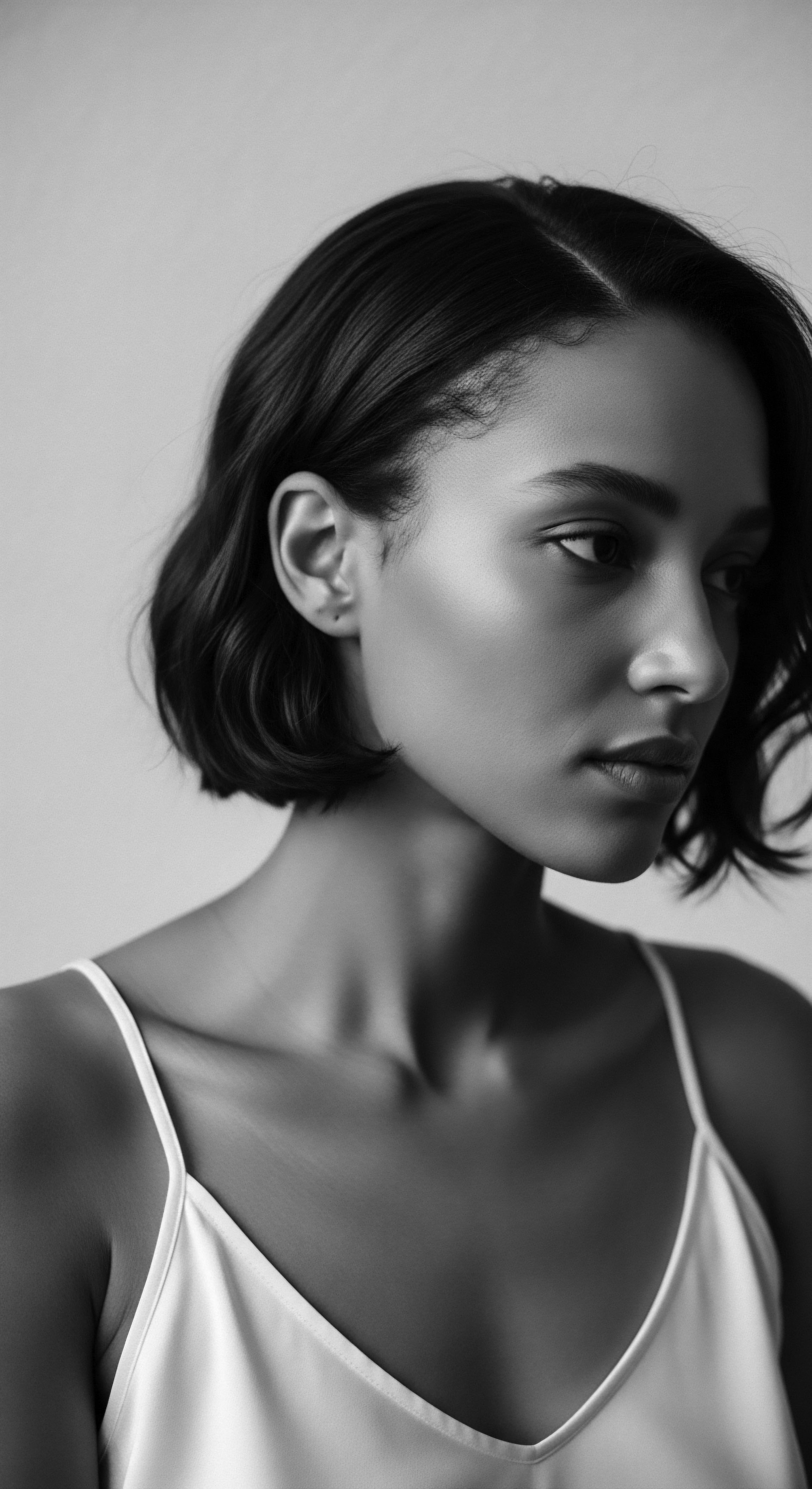
How does Hair Anatomy Inform These Societal Challenges?
Beyond the cultural and historical, an understanding of hair’s elemental biology deepens our appreciation for its distinct needs and the inherent unfairness of universal grooming codes. Textured hair, particularly Afro-textured hair, possesses a unique helix shape, making it more challenging for natural oils and moisture to travel down the hair shaft. This structural difference means textured hair requires specialized care and products, differing significantly from the care routines suited for straighter hair types.
When professional or academic settings mandate styles that require excessive heat or chemical alteration to achieve a “straightened” appearance, they are, perhaps unknowingly, compelling individuals to engage in practices that can compromise hair health. This imposition disregards the fundamental biological distinctions and the ancestral knowledge that has guided care practices for millennia, practices designed to nourish and protect these unique strands.
The language used to describe hair also holds weight. Terms like “kinky,” “coily,” or “wavy” are not merely descriptors; they connect to a lexicon that has been both celebrated and weaponized through history. When these terms become associated with negative connotations in professional discourse, it reinforces a subtle, yet powerful, form of bias. Ancestral knowledge, passed down through generations, often included a nuanced understanding of different hair types and the rituals suited to each.
The very act of classifying and naming hair was tied to a holistic understanding of self within community. When modern systems fail to grasp this inherent diversity, demanding a homogenized presentation, they betray a lack of cultural awareness that extends far beyond aesthetics.
- Tignon Laws ❉ Enacted in 18th-century Louisiana, these laws required free Creole women of color to cover their elaborately styled hair with a tignon or scarf, a legal mandate to signify their perceived lower social status, regardless of freedom.
- “Good Hair” Concept ❉ A historical byproduct of slavery, this concept emerged, associating straighter hair textures with desirability and social acceptance, creating internal divisions within Black communities.
- Boarding School Policies ❉ In the United States, Indigenous children at boarding schools were forcibly shorn of their braids, a practice aimed at stripping them of their cultural identity and severing ancestral ties to hair as a spiritual marker.

Ritual
The daily rhythm of caring for textured hair extends beyond mere grooming; it is a ritual, a tender thread connecting individuals to ancestral wisdom and community practices. For generations, Black and mixed-race communities have developed a repertoire of styling techniques, tools, and transformations that honor the unique qualities of their hair. Yet, within professional and academic landscapes, these deeply rooted rituals often encounter a bewildering array of unspoken rules, microaggressions, and outright discrimination. This clash transforms what should be an act of self-care and cultural affirmation into a source of anxiety and pressure.
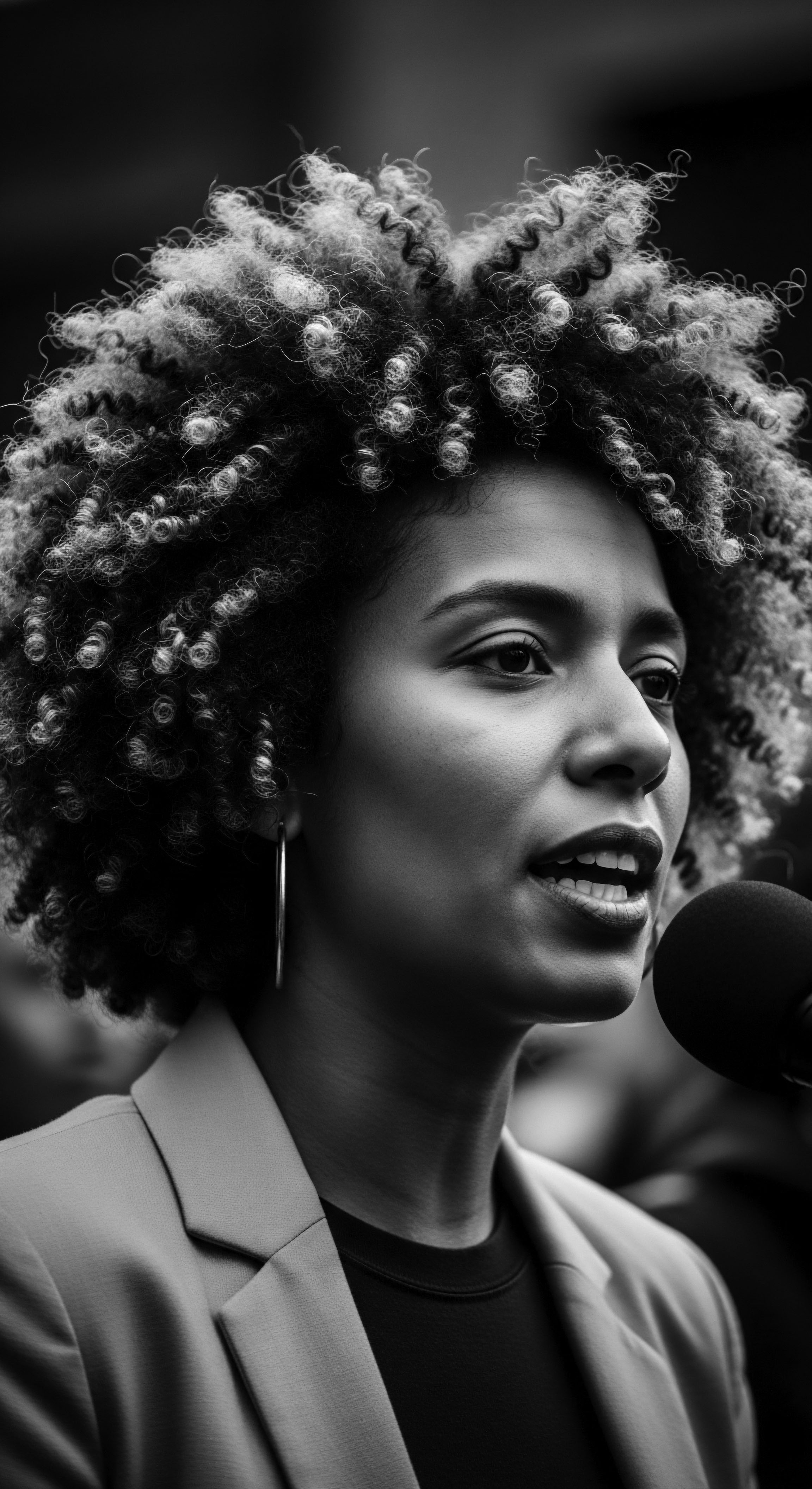
How Have Ancestral Styles Navigated Professional Expectations?
Consider the pantheon of Protective Styles ❉ braids, twists, locs, and Bantu knots. These are not merely fashionable choices; they are ingenious solutions born from necessity and artistry, safeguarding fragile strands from breakage, moisture loss, and environmental stressors. Their origins stretch back millennia, serving as forms of communal art, identity markers, and practical hair management. In ancient African societies, braiding, for example, was a social event, a time for storytelling and bonding, with each pattern carrying distinct meanings.
Yet, in contemporary professional and academic spaces, these styles, rich with history and purpose, have frequently been targets of unfair scrutiny. Employers and educators have, for decades, labeled them as “unprofessional” or “distracting,” forcing individuals to choose between their cultural expression and their opportunities. This pressure often results in individuals feeling compelled to straighten their hair, a process that can be damaging and time-consuming, diverting energy and resources away from academic pursuits or professional tasks. The inherent disconnect lies in the imposition of Eurocentric beauty ideals as the universal standard of professionalism, disregarding the cultural integrity and practical benefits of traditional styles.
The historical significance of protective hairstyles, deeply rooted in ancestral practices for care and identity, often clashes with restrictive professional and academic grooming codes.
The tools used in textured hair care also bear historical weight. While modern implements abound, traditional combs crafted from wood or bone, or specific braiding techniques passed down through lineages, speak to an ingenuity born of deep understanding of the hair’s structure. When discussing the challenges of styling, it becomes evident that the very act of preparing one’s hair for a professional or academic environment can be a strenuous endeavor. The time and monetary costs associated with maintaining styles deemed “acceptable” can be substantial.
One study revealed that 80% of Black women reported feeling they needed to alter their hairstyle to align with more conservative standards to fit in at work. This statistic alone underscores a pervasive pressure, transforming personal choice into a strategic calculation.
| Aspect Hair Styles |
| Ancestral Practice / Traditional Context Protective styles (braids, locs, twists) for preservation and cultural meaning, often communal creation. |
| Modern Professional/Academic Challenge Styles deemed "unprofessional" or "distracting"; pressure to straighten for conformity. |
| Aspect Care Rituals |
| Ancestral Practice / Traditional Context Use of natural oils (e.g. castor oil, olive oil), herbs (e.g. amla, bhringraj), and practices like rice water rinses for holistic health. |
| Modern Professional/Academic Challenge Lack of understanding of specialized moisture needs; policies indirectly promoting damaging heat/chemical use. |
| Aspect Hair as Identity |
| Ancestral Practice / Traditional Context Direct reflection of social status, tribal affiliation, spiritual beliefs, and personal journey. |
| Modern Professional/Academic Challenge Pressure to assimilate appearance, diminishing personal expression and cultural connection. |
| Aspect Community & Knowledge |
| Ancestral Practice / Traditional Context Intergenerational transmission of techniques and wisdom; shared experiences of care. |
| Modern Professional/Academic Challenge Isolation in navigating hair standards; limited availability of culturally competent stylists/resources. |
| Aspect Understanding this historical and contemporary interplay is vital for fostering environments where textured hair, and the heritage it carries, is truly respected. |
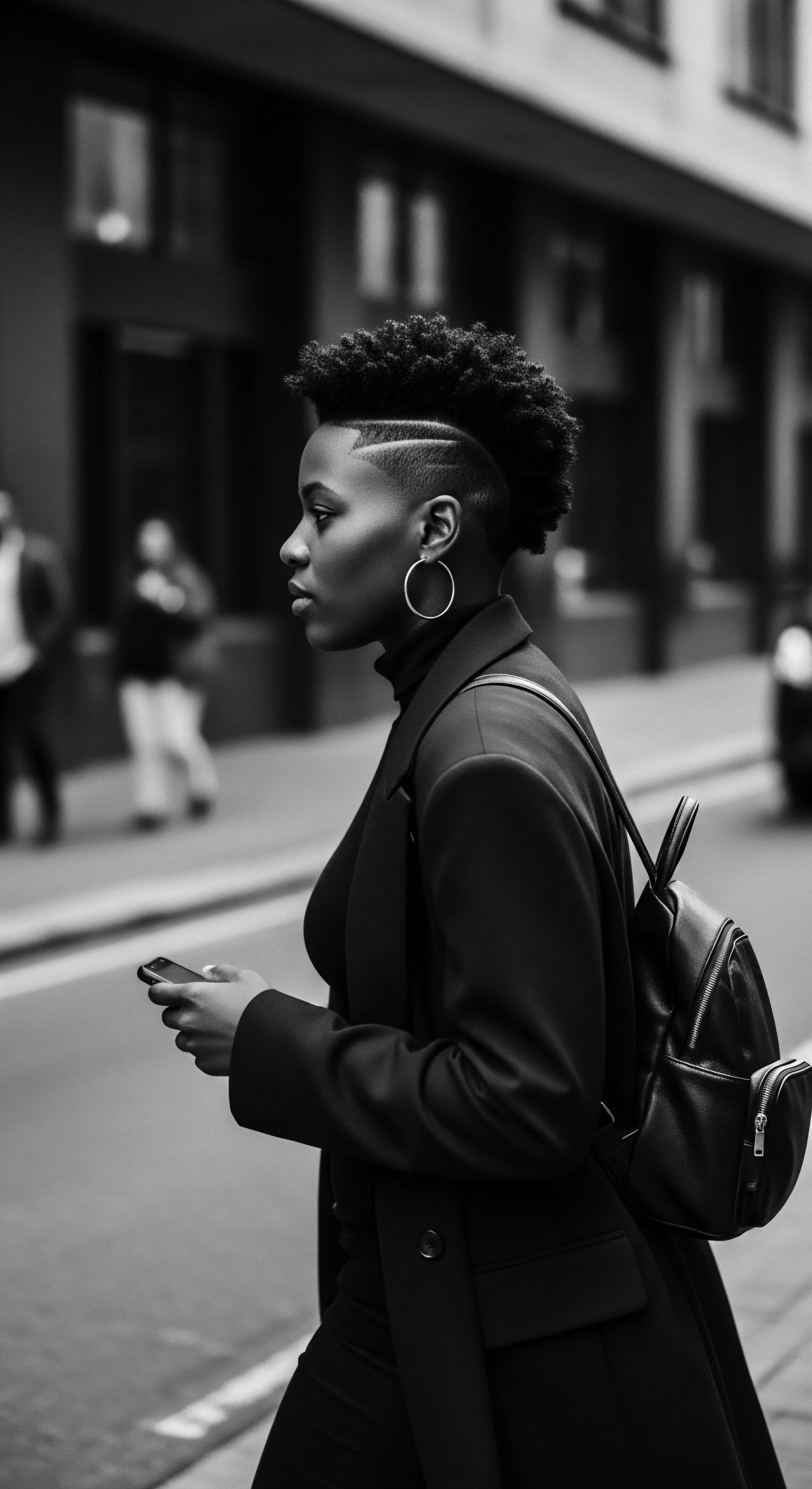
What is the Cultural Burden of Hair Maintenance Choices?
The act of navigating these expectations often places a heavy emotional and cultural burden. Women of color, particularly Black women, frequently report the societal expectation to continually explain, defend, or validate their hair choices to non-Black colleagues and peers. This experience, termed a form of Microaggression, speaks to a broader societal lack of cultural literacy concerning textured hair.
The demand for conformity often extends to an assumption that one’s hair should lie flat, remain static, or present in ways that contradict its natural tendencies. This lack of awareness contributes to a feeling of being constantly scrutinized, impacting well-being and satisfaction in academic and professional spaces.
The struggle is not new. Even in the late 1800s, as more people of color entered the professional world, they faced immense pressure to adopt mainstream hairstyles worn by white women, often involving hot combs or chemical treatments to achieve a “polished” look. This historical pattern underscores a persistent bias that views natural textured hair as somehow less “finished” or less “ready” for formal settings. The irony is poignant ❉ ancestral practices celebrated and enhanced the hair’s natural form, while imposed modern standards often necessitate its alteration, creating a psychological strain that goes beyond superficial appearance.

Relay
The journey of textured hair in professional and academic settings represents a continuous relay, passing the baton of challenge and resilience across generations. It’s a dynamic interplay where deeply embedded historical biases meet evolving social consciousness and legal frameworks. To truly grasp the complexities, we must move beyond surface-level observations and analyze the systemic underpinnings that perpetuate hair discrimination, drawing on research and legal scholarship.

How does Systemic Bias Shape Institutional Hair Policies?
Systemic bias against textured hair is not merely an individual prejudice; it is woven into the very fabric of institutional norms and policies. These policies, often framed as neutral dress codes or grooming standards, disproportionately affect Black and mixed-race individuals. The origins of such policies can be traced to colonial and post-slavery eras, where standards of beauty and professionalism were explicitly linked to Eurocentric ideals. This created a problematic archetype against which all appearances were measured, inadvertently—or perhaps intentionally— marginalizing traditional Black hairstyles.
For instance, a Duke University study revealed that Black Women with natural hairstyles were consistently perceived as “less professional,” “less competent,” and “less likely to be recommended for a job interview” compared to Black women with straightened hair or white women with either curly or straight hair. This rigorous data highlights the pervasive, often unconscious, biases that operate within professional gatekeeping mechanisms. The biases were even more pronounced in industries with conservative dress norms, which frequently include academia and many professional fields. Such findings speak volumes about the invisible barriers that persist, making the path to advancement steeper for those who choose to wear their hair in culturally significant styles.

What Legal Progress Has Been Made to Protect Natural Hair?
The advent of legislation like the CROWN Act marks a significant turning point in addressing these systemic inequities. CROWN, an acronym for “Creating a a Respectful and Open World for Natural Hair,” is designed to prevent discrimination based on hair texture and protective styles associated with race. This legislation arose from decades of legal battles and public advocacy, aiming to close loopholes in existing civil rights laws that often failed to explicitly protect against hair-based discrimination. Before the CROWN Act, federal courts frequently ruled that hair discrimination was not explicitly race discrimination under Title VII of the Civil Rights Act of 1964, creating a void in legal protection.
As of 2022, 17 states had adopted the CROWN Act, making it illegal to discriminate against Black people based on their hair in workplaces and schools. This legislative momentum represents a crucial step in shifting institutional norms. The Act’s significance lies in its explicit recognition that hair textures and styles like locs, braids, and twists are intrinsically tied to racial identity and, therefore, are protected characteristics.
This legal clarification forces institutions to re-evaluate their dress codes and grooming policies, aligning them with principles of equity and cultural inclusivity. It also sends a message ❉ denying someone an opportunity based on their natural hair is a form of racial bias.
- Legal Precedents ❉ Early cases like Jenkins v. Blue Cross Mutual Hospital Insurance (1976) began to challenge hair discrimination, upholding the right to wear afros under Title VII, yet the interpretations remained inconsistent for other styles.
- Chasity Jones Case ❉ In 2013, the EEOC pursued a case for Chasity Jones, whose job offer was revoked for refusing to cut her locs; despite the EEOC’s efforts, the Supreme Court declined to hear the case, illustrating the legal ambiguity prior to the CROWN Act.
- CROWN Act Movement ❉ Initiated in 2019, the CROWN Act represents a coordinated effort to define race to include hair texture and protective styles, gaining traction across states and at the federal level to prevent race-based hair discrimination.
Despite the legal progress, implementation and enforcement remain ongoing challenges. Individuals continue to experience microaggressions, unwanted touching, or comments about their hair, even in environments where the CROWN Act is law. This underscores the gap between legal protection and lived experience, pointing to a need for deeper cultural competency and sensitivity training within institutions. The emotional toll of constantly navigating these biases can be substantial, leading to feelings of disaffection or alienation, and impacting academic or career aspirations.
Legislation like the CROWN Act provides vital legal protection against hair discrimination, yet cultural shifts and broader understanding remain essential for true equity in professional and academic settings.
The challenges in professional and academic settings are not solely external. There can also be an internalized pressure to conform, stemming from generations of societal conditioning. The narrative that textured hair is somehow “unprofessional” can lead individuals to preemptively alter their hair, even without explicit demands. This self-policing, while a coping mechanism, underscores the profound psychological impact of systemic bias.
It creates a subtle erosion of identity, pushing individuals away from their natural self-expression and the heritage embodied in their hair. This constant negotiation between personal identity and external expectations represents a deeply personal facet of the challenges individuals with textured hair face.
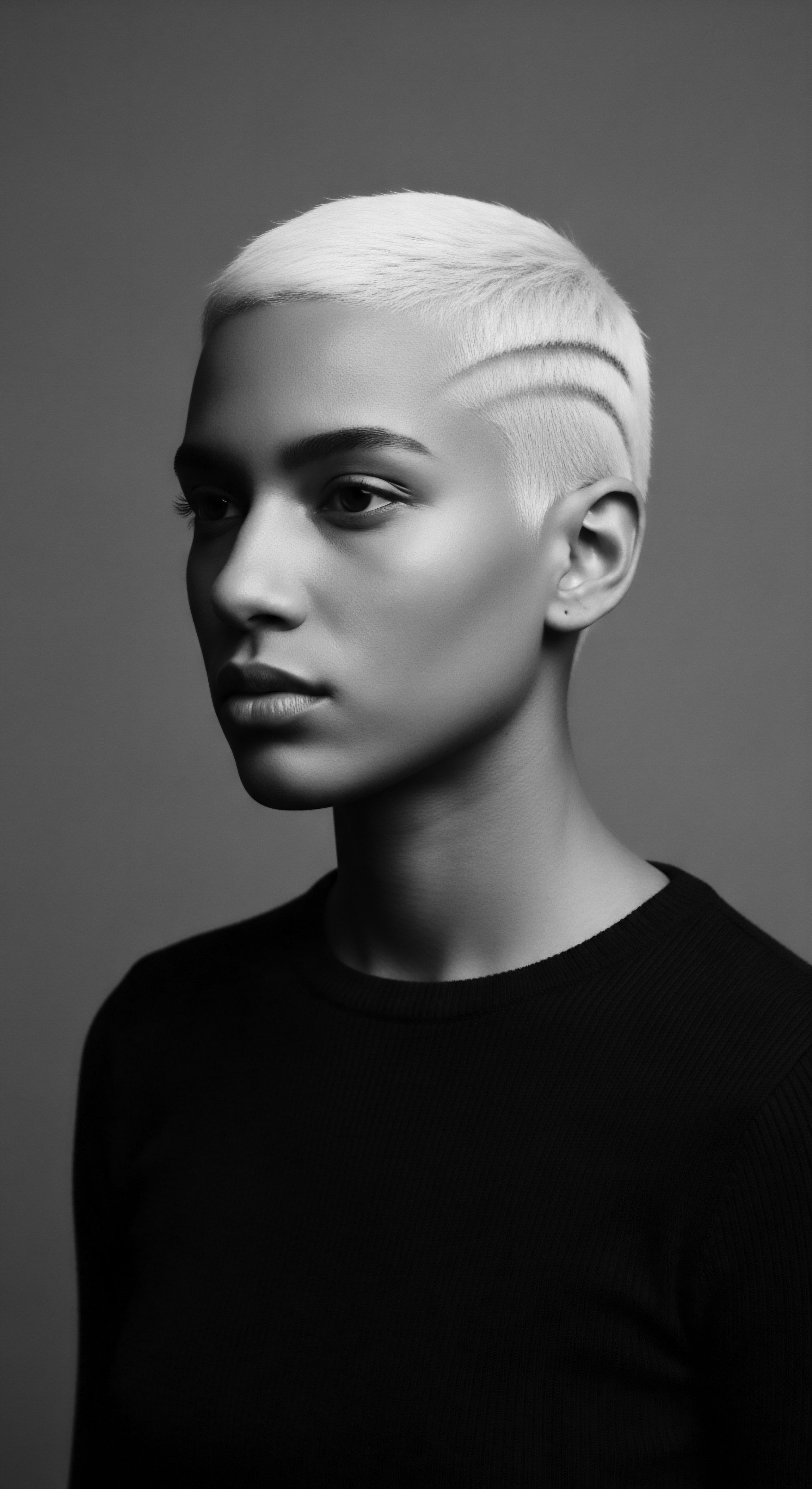
Reflection
As we chart the course of textured hair within professional and academic spaces, it becomes clear that its journey is a profound meditation on identity, legacy, and the ongoing human striving for belonging. The challenges faced are not isolated incidents; they are resonant echoes of a past where indigenous beauty was systematically devalued, and a profound connection to ancestral practices was severed. Yet, through resilience, cultural reclamation, and the steady march of advocacy, the unbound helix of textured hair continues to tell its story.
To understand the challenges is to acknowledge the historical currents that have shaped our present. It is to recognize that a hairstyle is rarely just a hairstyle; it is a declaration, a connection to a rich past, a living testament to journeys undertaken. Roothea’s Soul of a Strand ethos calls us to view each coil, kink, and wave not as a deviation from a norm, but as a unique expression of the human spirit, imbued with generations of wisdom and care. The quest for professional and academic spaces to honor this heritage is not about mere tolerance; it is about cultivating environments where authenticity is celebrated, where the fullness of one’s cultural identity is seen as a source of strength, not a barrier.
When institutions truly embrace the diversity of textured hair, they do more than simply update a dress code; they participate in a profound act of restorative justice, acknowledging and uplifting a heritage that has too long been marginalized. This recognition allows for a future where the beauty of every strand, in its natural, magnificent glory, is truly seen and respected.
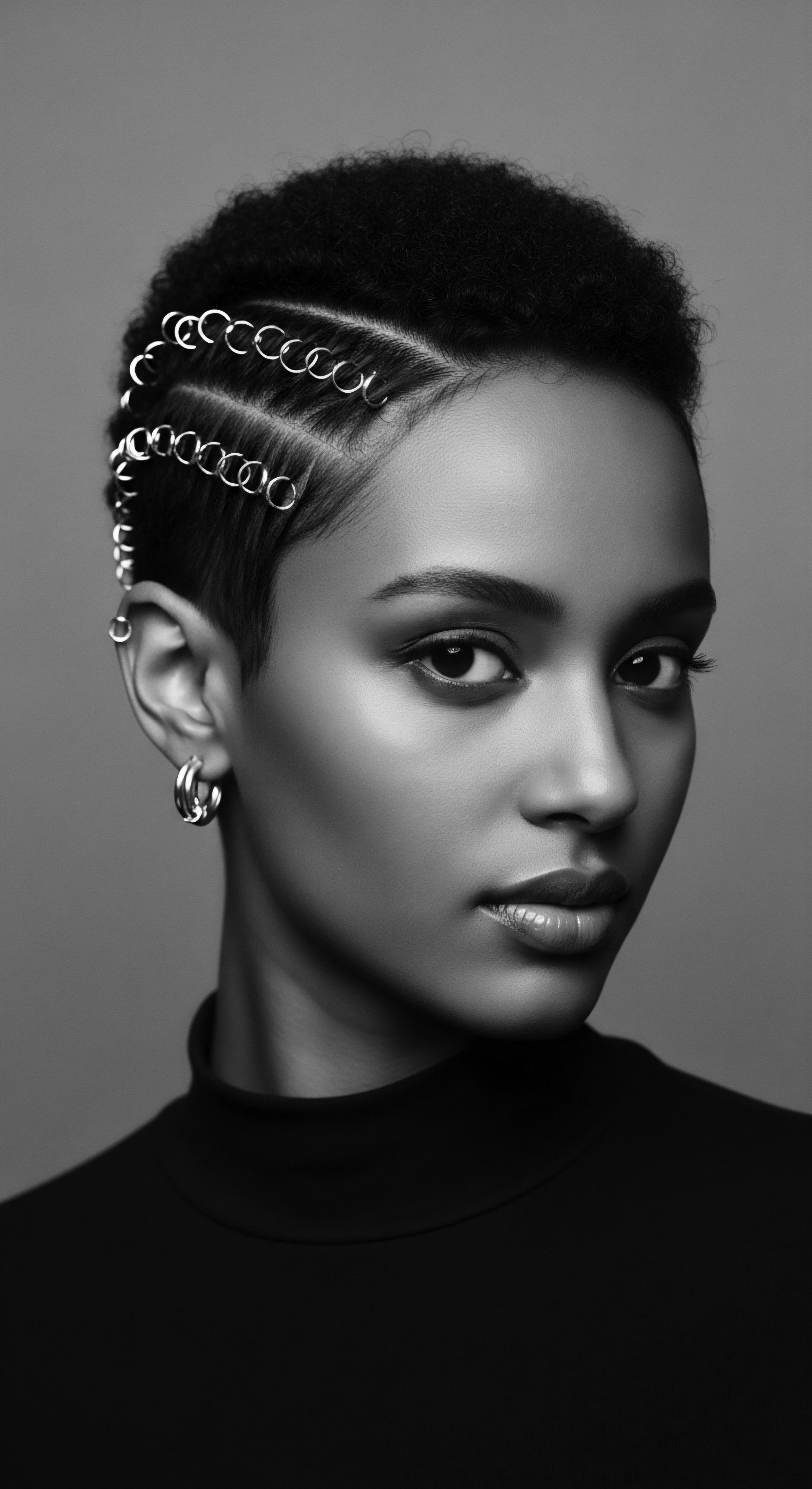
References
- Jones, R. (2019, July 3). How Natural Black Hair at Work Became a Civil Rights Issue. JSTOR Daily.
- The CROWN Act ❉ The History of Hair. (2021, November 19). YouTube.
- The Roots Of The CROWN Act ❉ What Employers Need To Know About Hairstyle Discrimination Laws. (2020, April 23). Fisher Phillips.
- Hair Discrimination FAQ. (n.d.). Legal Defense Fund.
- Confronting Hair Discrimination in Schools – A Call to Honor Black History by Protecting Student Rights. (n.d.). IDRA.
- Natural Hair is Good Hair ❉ The CROWN Act and Ending Hair Discrimination in the Workplace. (2021, October 1). NCDA.
- Bridging the Texture Gap with Texture Care ❉ Reflections from the 2024 Salon International. (2024, October 16).
- Massachusetts Commonwealth Law Bars Discrimination in Employment on Basis of Hairstyles. (2024, July 17). Hayber, McKenna & Dinsmore.
- Embracing Black Hair Independence Day ❉ Fostering Cultural Inclusion In The Workplace. (n.d.).
- ‘Hair Has Nothing to do with Competency’. (2021, December 14). University of New Haven.
- How the Crown Act Could Remedy the Inadequacies of Title VII Hair Discrimination Protections in the Entertainment. (n.d.). Scholarly Commons @ FAMU Law.
- Honoring the Spiritual Legacy, Resiliency, & Healing Power of Our Ancestors Through Indigenous Customary Hair Traditions. (2020, September 30). Cultural Survival.
- The CROWN Act ❉ A jewel for combating racial discrimination in the workplace and classroom. (2023, July 26). Economic Policy Institute.
- Tangled Roots ❉ Decoding the history of Black Hair. (2021, January 28). CBC Radio.
- Afro-Textured Hair Discrimination. (n.d.). Tangle Teezer.
- What Dress Codes Are Teaching Our Students. (2020, March 3). HxA – Heterodox Academy.
- Discrimination based on hair texture. (n.d.). Wikipedia.
- The Politics of Black Hair. (2023, December 12). Psychology Today.
- Celebrating and Protecting Our Hair History ❉ The Halo Collective’s Black Hair Revolution. (2024, October 11).
- A Brief History of Black Hair, Politics, and Discrimination. (n.d.). CommonLit.
- Opinion ❉ Why is Black hair seen as “unprofessional”? (2024, March 25). The Varsity.
- About — The Official CROWN Act. (n.d.).
- Hair Care Secrets of the Past ❉ What Our Ancestors Used for Healthy Hai. (2024, August 19).
- Hair As a Barrier to Physical Activity among African American Women ❉ A Qualitative Exploration. (2018, January 17). PMC.
- Afro-texture ❉ a hair-story. (2021, October 29). Kilburn & Strode.
